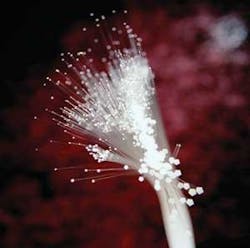Fiberoptic lighting: Superior and cost-effective
By Marc D. Cohen, DDS
Dentists face many challenges as they work in a small, inaccessible, wet, and dark environment. These key physical elements must be controlled once we have diagnosed a patient’s problem and begin treatment. The solutions to these challenges involve proper instrumentation, isolation, magnification, and illumination. This article addresses the role of illumination and contrasts traditional overhead lighting with remote fiberoptic lighting.
Illumination of the operating field has always been crucial in providing dental care. Traditionally, dental operating units have been and, for the most part still are, equipped with standard overhead lighting. To many dentists, this type of lighting never has seemed to do an adequate job. But it is all that was known and available. Problems with this type of lighting include lack of intense focal illumination, shadowing, expense, the constant need to adjust the light, maintenance of the support arm springs and wiring, diminished light output due to reflector degradation, and the inadvertent shining of light in patients’ eyes. Dentists attempted to overcome these problems by adding fiberoptic light to the high-speed handpiece. But this created another set of problems. Among those are the breakdown of lighting quality with multiple autoclave cycles of the handpieces, an increase in expense of the handpieces, and the lack of similar illumination with the use of low-speed handpieces or hand instruments. It also did not allow dental hygienists to utilize improved illumination.
A better solution is the use of a remote light source carried via fiberoptic cabling to a lens that is either attached to a headband or to bioptic magnifying glasses. There are numerous advantages to this type of illumination. Fiberoptic cabling provides intense focal illumination, eliminates shadowing, is less expensive, requires little intraprocedure adjustment, and - with very little experience - can be prevented from shining in a patient’s eyes. This lighting also allows a dental hygienist to take advantage of improved illumination, and eliminates the need for and dependence on a fiberoptic high-speed handpiece. There also are disadvantages to remote fiberoptic light. Disadvantages include the need to replace light bulbs, occasional fuse replacement, the use of filtering when working with light-sensitive restorative materials, and care must be taken with the fiberoptic cable (replacement of the fiberoptic cable is costly). None of these disadvantages, though, should discourage the use of this light source. Overall, cost of the equipment is less than traditional overhead lighting. There are several manufacturers of this type of light source. They offer a variety of styles, lightbulb choices (some bulbs last for weeks and others for months), illumination intensities, and accessories (some manufacturers have different cabling that can be easily attached to provide a transilluminator wand).
But, if fiberoptic light is such an improvement and less costly, why doesn’t everyone use this type of lighting? There are several reasons why it is difficult to break from the past. First, dentists in the market for new chairs and units are offered the lighting as part of a package, while dentists looking to replace lighting find it simpler to just replace what lighting they had. Also, dentists might not be aware of improved illumination equipment.
The cost difference between overhead and fiberoptic lighting is dramatic and might be surprising. The cost of a quality overhead light can range from $1,500 to $2,000. The cost of a remote source light with the fiberoptic cabling included is less than $1,000. My experience has shown that servicing will be needed on the remote sources, but rarely will the fiberoptic cable require replacement. Most manufacturers will supply a replacement light source as a loaner during repairs, but this does not help a dentist when the light source fails. Therefore, I highly recommend that one or more additional light sources be purchased as backups (the light source without the fiberoptics is approximately $500). This does add to the cost of purchasing this type of equipment, but the overall cost still is less than overhead lighting.
Another issue concerns utilization of the light for those who do not have compatible bioptic magnifiers or do not use magnification. An increasing number of dentists, as well as some dental hygienists, are using bioptic magnifiers. Regardless of the eyeglass frame type, you will undoubtedly be able to find a product that will allow attachment to it. If no magnifiers are used, then the headband assembly can be used.
Introducing this technology to existing or new staff is relatively simple. They should be versed in changing lightbulbs and fuses as well as the care of the fiberoptic cable. This requires a short amount of training time. Adjusting to using the light clinically takes very little time, too. This type of lighting also serves to streamline equipment bulk, and improve the “landscape” of the dental operatory by removing the necessity of a tall support pole or ceiling mount in addition to eliminating the cantilevered arm and light head.
Utilization of remote fiberoptic illumination will reduce cost and improve the ease of providing dental care. Patients will be impressed with the superiority of equipment, and the practitioner’s working life should be enhanced greatly.
Dr. Marc D. Cohen graduated from the University of California San Francisco Dental School in 1983. He completed a general practice residency program at the Veteran’s Hospital in Sepulveda, Calif., from 1983-84. Currently, he is a member of a group private practice in Encino, Calif. Dr. Cohen can be reached by e-mail at [email protected].


